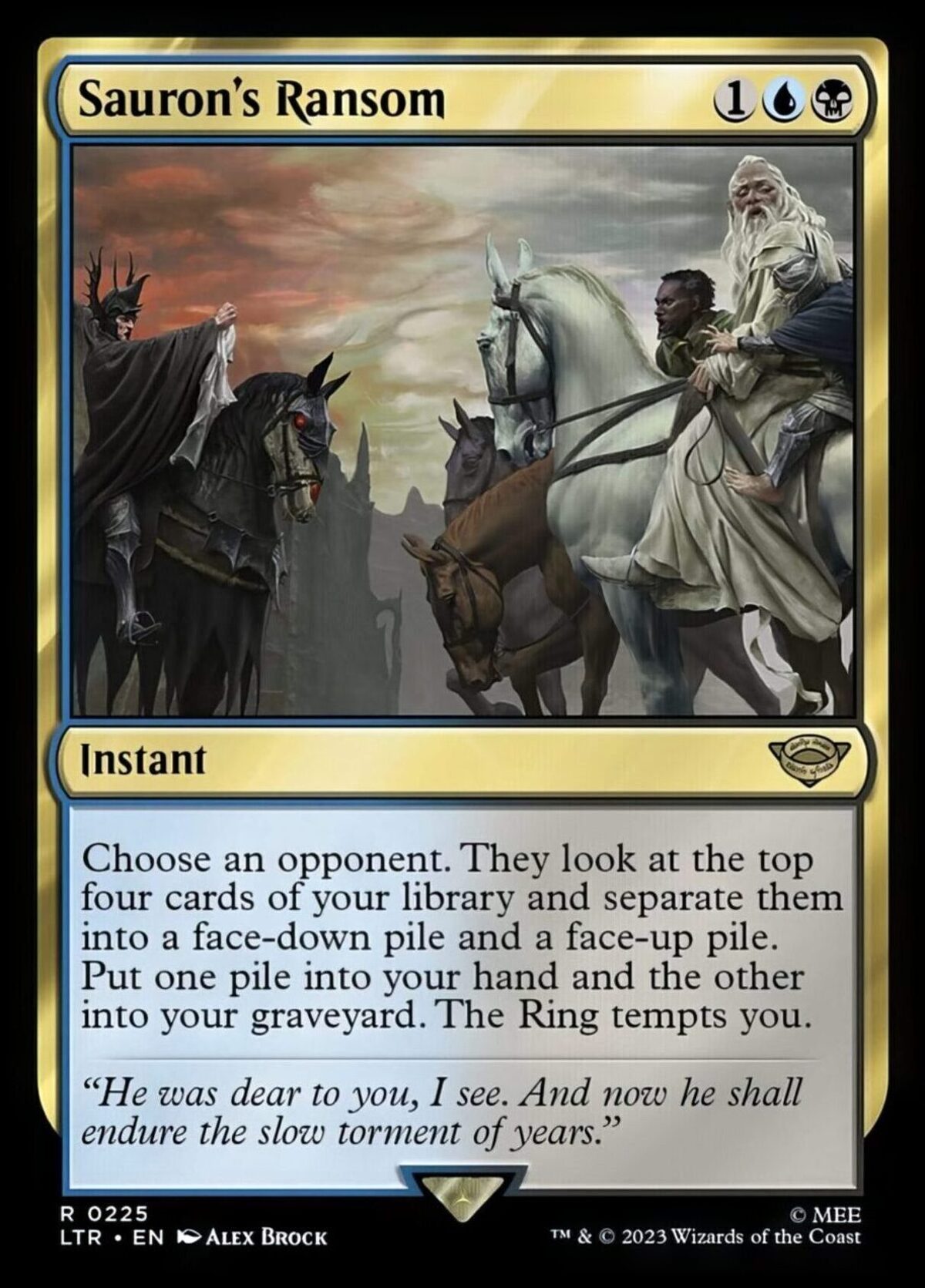The Strategic Nuances of Trading Card Games: An Insightful Exploration of Magic: The Gathering and the Allure of The Lord of the Rings Card, Sauron’s Ransom
Trading card games, often referred to as collectible card games (TCGs), have cemented their place in the hearts of gamers for many years. They weave together a tapestry of fantasy and meticulous strategy, casting a spell over players globally. Magic: The Gathering (MTG), with its intricate gameplay and extensive array of cards, epitomises this genre. Notably, the MTG Lord of the Rings card, Sauron’s Ransom, has seen a formidable increase in value due to its rising prominence amongst Legacy MTG enthusiasts. This detailed analysis will examine the factors driving this surge and compare it to the mechanics of another esteemed trading card game, Legends of Elysium.
The Rise in Acclaim for Sauron’s Ransom
The value of Sauron’s Ransom, a pivotal card from the recently released MTG Lord of the Rings series, skyrocketed by 800% on July 16, 2023. Soaring from a modest $1 to an impressive $9 as stated by the secondary market tracker MTGGoldfish, this increase mirrored on TCGPlayer, where its price escalated from $0.58 to $4.15. This notable jump in value is attributed to its burgeoning popularity among Legacy format players.
Sauron’s Ransom is an Instant card, requiring one blue, one black, and one colourless mana to play. The mechanics involve selecting an opponent who then examines the top four cards of your library. These cards are divided into two piles—one visible and the other obscured. You then choose a pile to add to your hand, while the remainder are relegated to your graveyard. The card injects an element of suspense and strategy into the game experience, akin to Fact or Fiction, another Instant that also involves choosing between two sets of cards. However, Sauron’s Ransom adds a twist with the potential for one unknown pile, offering advantages through smart card drawing and milling when seeking specific cards. Despite being legal in Modern, Commander, Historic, and Vintage formats, it’s the Legacy players who gravitate towards Sauron’s Ransom, incorporating it in decks like Death’s Shadow, Grixis Tempo, and Grixis Delver. Another noteworthy card, the Orcish Bowmasters, seeing significant play and potential prohibition, fits within these same frameworks. The ascent and valuation of Sauron’s Ransom highlight the strategic dimensions integral to TCGs, demanding players to not only grasp card mechanics but to also excel in their deployment across various gameplay formats. This depth of strategic engagement is what sustains the enduring allure of card games like MTG.
A View on Legends of Elysium
Legends of Elysium, a TCG much admired in its own right, marries fantasy with strategic gameplay, albeit with a distinct approach. In contrast to MTG’s complex card synergies and strategies, Legends of Elysium emphasises hero development and progression through an engaging storyline. In LoE, players craft their decks around a chosen hero, with each hero boasting unique powers that could tilt the battle. This hero-driven approach injects a narrative dimension that differentiates it from MTG, though both games fundamentally revolve around strategic card utilisation. Whether it’s deciding on a pile in Sauron’s Ransom or selecting the optimal hero in Legends of Elysium, these choices shape the game’s course. One ponders whether a similar fervour will accompany Torg Whitehand from the LoE Genesis Collection.
TCGs like MTG and Legends of Elysium offer players an enthralling blend of fantastical settings and strategic depth. The unexpected rise and financial appreciation of the Sauron’s Ransom card from MTG’s Lord of the Rings set is indicative of the rich strategic layers found in such games. Whether through MTG’s intricate card interactions or Legends of Elysium’s focus on character-driven play, these games continue to enthrall with a beguiling synthesis of strategic thinking and the allure of fantasy, captivating players across the globe.
